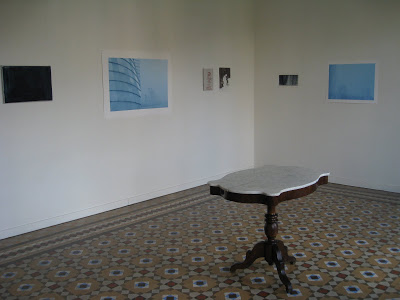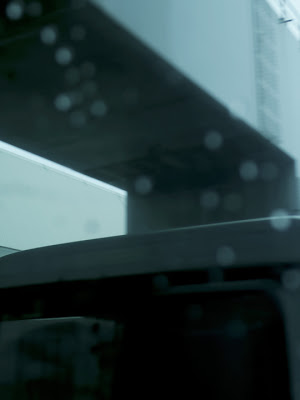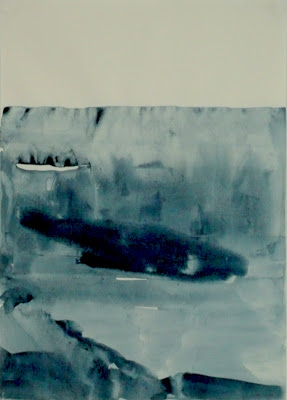Barcelona
Art Vent Letting the Fresh Air In
May 29, 2012
I’m in Barcelona where, for me, the highlight is the best hot chocolate in the world. Known as un suisin Catalan, this is smooth, barely liquid chocolate topped with an equal mound of whipped cream. These perfect opposites—hot and cold, black and white, dense and airy, bitter and sweet—come together in a delectable marriage on your tongue. “Like yin and yang,” says my friend, who won’t allow me to name the café because she doesn’t want it to become more overrun than it already is. Thus far, I’ve been there every day.
And so my love/hate relationship with contemporary art continues. After the previous post about my visit to Chicago, a Facebook friend wrote: “Strong feelings of ambivalence are an indication of deep involvement. Sounds like perhaps you need to choose more judiciously what to see?”
Yes, and no. I want to keep an open mind, and there’s nothing I like better than to have my prejudices overturned, as they were when I realized I liked (some of) Damien Hirst’s spots. I can’t help having opinions, so must constantly guard against turning into one of those loathsome people who spout about things they haven’t seen. However we should keep the question open until after my visit to the Hirst retrospective at the TateModern next week. One thing I know is that, after going to Barcelona’s SWAB fair on Saturday, in the interest of sanity, I should avoid art fairs altogether. At least I got to have a chocolate afterward.
Rather than “young,” the art at SWAB should have been billed as “immature”— adolescent scribbling like you wouldn’t believe. Or maybe you would. Luckily, however, as in Chicago, my inevitable tailspin was mitigated by later seeing spare, graceful, very grown up art, this time Rita McBride at the Barcelona Museum of Contemporary Art(MACBA). While the MACBA building is another example, like the Art Institute of Chicago’s Modern Wing, of harsh white walls and architectural hubris run amok (here that of Richard Meier), every exhibition I’ve seen at MACBA has been beautifully chosen and intelligently executed. Wait, I should say every recent exhibition I’ve seen, thereby excluding a gigantic show in 2005 devoted to Francis Alÿs, whose “diverse body of artwork that explores urbanity, spatial justice, and land-based poetics” (barf!) is a perfect example of what Jerry Saltz has accurately labeled and defined as “curator art.”
Richard Meier, Barcelona Museum of Contemporary Art: Where's the art?
At least MACBA doesn’t have a café. Chicago’s Art Institute, given its monolithic isolation on Michigan Avenue, needs to offer sustenance to the hoards of attendees, but its food optionsclearly reflect its values. For the 1%, there’s the posh, reservations-only Terzo Piano upstairs, while downstairs the other 99% of us are relegated to the euphemistic “Museum Café,” really a cafeteria. Here the gastronomic choices (burger station, pizza station, and sandwiches entombed in plastic) are of food court quality and accompanied by endless petroleum products—despite being a location where no one would, or could, take meals away. I was appalled when I was there, but now visiting in Europe, I’m even more disgusted by our throwaway society. Clearly it was foolish of me to assume that a cultural institution would somehow be conscious of plastic being not only wasteful but unaesthetic (my chocolate, if served in a plastic cup, would not be nearly so tantalizing). I suddenly had the horrifying thought that for current generations of Americans, the concept of reusing crockery at all is likely to seem as antiquated as linen hankies.
Addressing my previous post, Ben F. comments, “The large white box and grand entrance are created to give a sense of permanence in the way banks used to be built. A sense that the bank would be here long after you are gone so that you could trust that your donations (of art/money) would be safe. The large space then needs to be fitted with art to scale.”
Again, silly me! I forgot that the main purpose of any institution is self-preservation, which means that the Art Institute’s primary concern is to secure the wherewithal that keeps it going. And there I was, thinking that it was about art!
Comments (2)
August 14, 2011
Often, as a guest artist, I meet people from far-flung parts of the country who want to know how they can have an art career if they live in, say, Akron (apologies to Akron, if it has a vibrant scene I don’t know about). They often look startled at the suggestion that they could perhaps move, when, in any other profession, normal procedure would be to go where the opportunities are. It’s possible for some people, I suppose, to make great art in a vacuum, but most of the time when artists aren’t actively part of the bigger conversation, the work lags.
There is, however, another option: make your own scene.
Artist-run galleries, publications, coops that convert industrial buildings for studio space, or even pop-up exhibitions, are just some of the ways artists can band together and take charge of their own environment. This summer, in out-of-the-way places—
 |
| Nina Zurier, Sleepwalking, 2011, inkjet print, 34" x 18". |
 |
| John Zurier, Iceland (loft), 2011, ink on paper, 11.6" x 8.2". |
| Jack in his studio. |
And then I just couldn't resist taking a photo of what has to be the most beautiful bathroom in the world, which echoes the blue theme:
